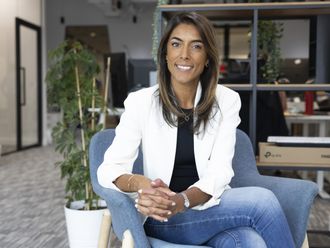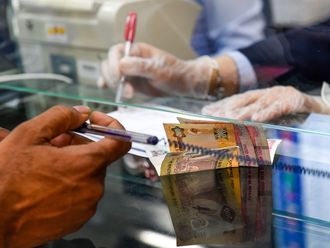
Dubai: Anita Nayyar is not just a 27-year-old who prides herself in having lived in Dubai all her life, she credits the city in charming her into starting out as a fashion model, while also turning her into the sole owner of a profitable talent agency in two years.
“I started a talent agency because I am a model. Since I started modelling at a young age, I knew that this is what I wanted to do in life. I wanted to build an empire of my own, with a vision to not only make it here in Dubai, but the rest of the world,” revealed the Indian-Russian expat.
“I launched my agency back in 2022 with Dh10,000 initially and it has been running pretty well, with this investment multiplying at least ten times as profit in the first months’. Today, we have already profited at least Dh1 million from the business, and we’re still growing.”
‘Exponential’ growth in the past year
Nayyar, who said the business witnessed exponential growth particularly in the last one year, revealed that the business was quick to reach ‘break even’ point from the investment after the initial months, before detailing the initial costs that went into the start-up.
“As a start-up business - there were several expenses I had to deal with. From creating a website and planning a platform to help the business run smoother, and hiring more people to join my team, were just some of the initial things I had to invest on to launch my business,” she added.
Nayyar listed out that an e-trader license cost Dh1,500, and web development cost Dh4,000, with Dh1,800 costing every month for maintaining the website and server. Also, the cost for ‘Booker’, a cloud-based software for businesses to manage their operations and marketing was Dh3,000.
Sacrifices made in terms of time, money
When it comes to accounting or bookkeeping, the entrepreneur added that the first month audit cost the business Dh4,000, with Dh2,500 going forward. “Starting up a business was never easy, as there’s a lot of planning, strategising, and costings that had to be done,” she added.
“Most of all, there were sacrifices made in terms of time and money. No business is perfect in the beginning, there will always be a trial and error stage wherein you discover what works best for the type of business you are trying to put up.
“To avoid loses as much as possible, I account on things and expenses as precisely as I can and manage the business’s overhead costs to a minimum - avoiding unnecessary expenses to keep the profit margin as is.”
Entrepreneurship betters money management skills
As the founder of a business, Nayyar said she still finds herself to be “very hands-on in everything that goes in and out of the business”. When asked how she manages her finances as an entrepreneur, she said: “I seldom splurge luxury as I prioritise expanding and growing my business.
“I keep Dh5,000 each month for household spending and daily living. I manage to keep this budget by sticking to a strict purchase list for household things and expenses. Now that I run my own business, and earn my own money, it makes me appreciate its worth even more,” she added.
“I was very excited to receive my very first pay, thinking then, this is the price of hard work. I have started to save for my family’s future, and investing in properties which can be liquidated, while also saving a portion of my earnings for my future self, which includes funds for health and emergencies.”











